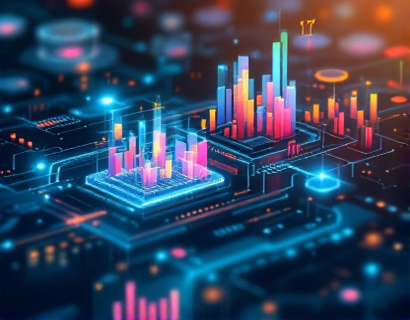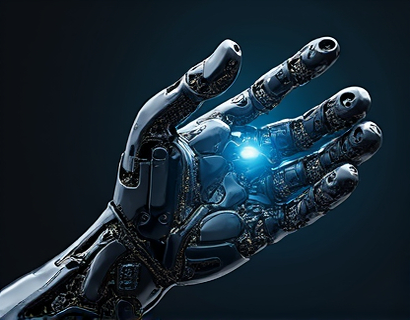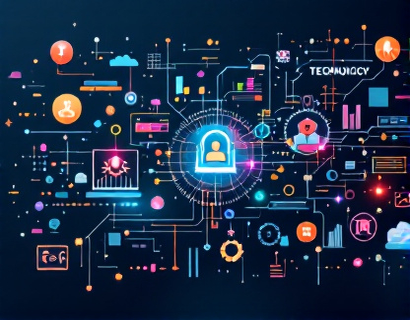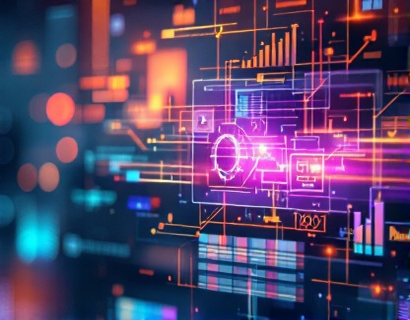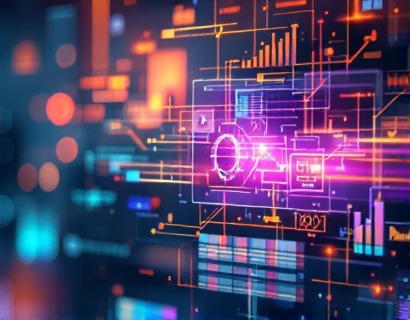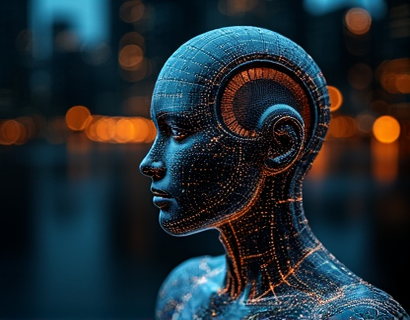Revolutionizing Digital Services: The Synergy of Crypto and AI
The intersection of cryptocurrency and artificial intelligence (AI) is paving the way for a new era of digital services, fundamentally transforming how users interact with applications and platforms. This fusion leverages the decentralized and secure nature of blockchain technology with the advanced computational capabilities of AI, resulting in enhanced user experiences and innovative solutions. As we delve into this topic, we will explore the latest advancements in tech-driven solutions, examining how these powerful technologies are reshaping the digital landscape.
Understanding the Basics: Cryptocurrency and AI
To fully appreciate the impact of crypto and AI on digital services, it's essential to understand the fundamentals of both technologies. Cryptocurrency, such as Bitcoin and Ethereum, operates on blockchain technology, a decentralized ledger that ensures transparency, security, and immutability. This technology enables peer-to-peer transactions without the need for intermediaries, reducing costs and increasing efficiency.
Artificial intelligence, on the other hand, involves the simulation of human intelligence in machines that are programmed to think and learn like humans. AI encompasses various subfields, including machine learning, natural language processing, and computer vision. These technologies enable machines to perform tasks that traditionally required human intervention, from data analysis to decision-making.
The combination of cryptocurrency and AI creates a powerful synergy. Blockchain provides a secure and transparent environment for AI models to operate, while AI enhances the functionality and efficiency of blockchain-based applications. This synergy is driving the development of new digital services that offer unparalleled user experiences.
Enhanced Security and Trust
One of the most significant benefits of integrating AI with cryptocurrency is the enhancement of security and trust in digital transactions. AI algorithms can detect and prevent fraudulent activities by analyzing patterns and anomalies in real-time. For instance, machine learning models can identify suspicious transactions and alert users or automatically block them, ensuring a safer environment for crypto transactions.
Moreover, AI can improve the verification process in decentralized applications (dApps). Traditional identity verification methods are often cumbersome and vulnerable to breaches. AI-driven solutions can streamline this process by using biometric data and behavioral analysis to authenticate users securely. This not only enhances security but also simplifies the user experience.
Blockchain's inherent transparency, combined with AI's analytical capabilities, fosters a higher level of trust among users. Transactions are recorded on a public ledger, and AI can provide real-time audits and compliance checks, ensuring that all activities adhere to predefined rules and regulations. This transparency and accountability are crucial for building trust in the crypto ecosystem.
Optimized User Interfaces and Personalization
The integration of AI in crypto-driven digital services also revolutionizes user interfaces and personalization. AI algorithms can analyze user behavior and preferences to provide tailored experiences. For example, a crypto wallet app can use AI to suggest optimal investment strategies based on a user's historical data and market trends.
Natural language processing (NLP) enables more intuitive and user-friendly interfaces. Chatbots powered by AI can assist users in navigating complex crypto platforms, answering queries, and providing guidance in real-time. This not only improves user satisfaction but also reduces the learning curve associated with using crypto applications.
Furthermore, AI can optimize the design of user interfaces by analyzing user interactions and feedback. Machine learning models can identify which features are most used and refine the UI accordingly, ensuring that the app is both functional and aesthetically pleasing. This continuous improvement cycle leads to a more seamless and enjoyable user experience.
Efficient Data Processing and Analytics
AI's ability to process and analyze large volumes of data is a game-changer for crypto and digital services. Blockchain generates vast amounts of data, and AI can extract valuable insights from this data to enhance various aspects of digital services. For instance, AI can analyze transaction patterns to predict market trends, helping users make informed investment decisions.
In the realm of smart contracts, AI can automate the execution and enforcement of contractual obligations by analyzing conditions and ensuring compliance. This reduces the need for intermediaries and speeds up transaction processing times. AI can also monitor the performance of smart contracts, identifying potential issues and suggesting optimizations.
Additionally, AI-driven analytics can provide deep insights into user behavior and preferences, enabling service providers to refine their offerings. By understanding user needs and preferences, platforms can develop more targeted and effective services, leading to higher user engagement and satisfaction.
Decentralized AI and Edge Computing
The combination of decentralized technologies and AI is giving rise to decentralized AI (DAI) systems. These systems distribute AI computations across a network of nodes, leveraging the collective power of the network to perform complex tasks. This approach not only enhances computational efficiency but also ensures that data remains decentralized and secure.
Edge computing, another key technology, complements this setup by processing data closer to the source, reducing latency and bandwidth usage. In the context of crypto and AI, edge computing can enable real-time data processing and AI inference, making applications like autonomous vehicles and smart cities more feasible and efficient.
Decentralized AI models can also improve privacy by keeping sensitive data on local devices rather than central servers. This ensures that user data is not exposed to potential breaches and maintains user control over their information. The synergy between decentralized AI and edge computing is paving the way for more private, efficient, and scalable digital services.
Case Studies and Real-World Applications
Several projects and platforms are already leveraging the power of crypto and AI to create innovative digital services. One notable example is Decentralized Finance (DeFi), which uses blockchain and AI to offer financial services without traditional intermediaries. DeFi platforms employ AI algorithms to optimize trading strategies, manage risk, and automate transactions, providing users with greater control and flexibility.
Another area where crypto and AI are making waves is in the domain of non-fungible tokens (NFTs). AI-generated art and collectibles are becoming increasingly popular, with platforms using AI to create unique digital assets. These NFTs can be verified and traded on blockchain, ensuring authenticity and ownership. AI can also enhance the NFT market by providing personalized recommendations and insights to collectors.
In the realm of supply chain management, blockchain and AI are being used to create transparent and efficient systems. AI can track and analyze the movement of goods in real-time, while blockchain ensures that all transactions are recorded and verifiable. This combination reduces fraud, improves traceability, and enhances overall supply chain efficiency.
Challenges and Future Prospects
Despite the numerous benefits, the integration of crypto and AI also faces several challenges. One major issue is the regulatory landscape, which is still evolving and often inconsistent across different regions. Navigating these regulations requires careful consideration and compliance to ensure legal and ethical operations.
Another challenge is the technical complexity involved in developing and maintaining decentralized AI systems. Ensuring the interoperability of different blockchain platforms and AI frameworks requires significant expertise and resources. However, as the technology matures, these challenges are expected to be addressed, paving the way for broader adoption.
The future of crypto and AI is promising, with ongoing research and development pushing the boundaries of what is possible. The convergence of these technologies is likely to lead to even more innovative applications, from advanced virtual reality experiences to intelligent autonomous systems. As the ecosystem continues to grow, we can expect to see more seamless and intuitive digital services that enhance user experiences across various industries.
In conclusion, the fusion of cryptocurrency and artificial intelligence is revolutionizing digital services, offering enhanced security, personalized experiences, and efficient data processing. As these technologies continue to evolve, they will play a pivotal role in shaping the next generation of digital interactions, making the online world more secure, efficient, and user-friendly.






